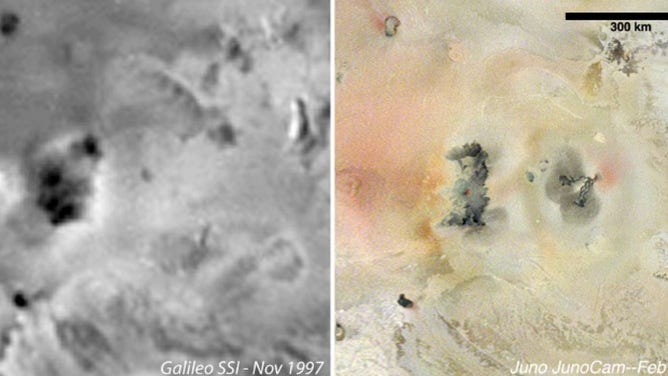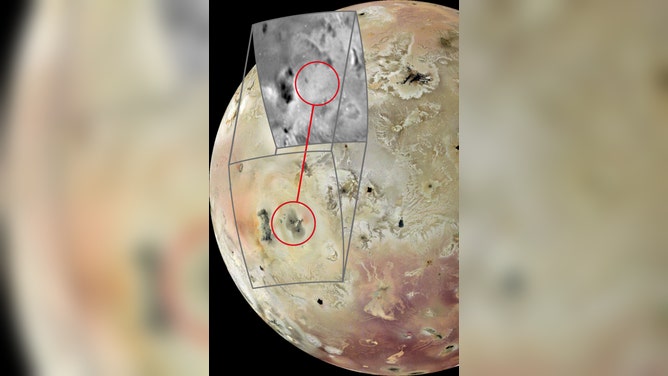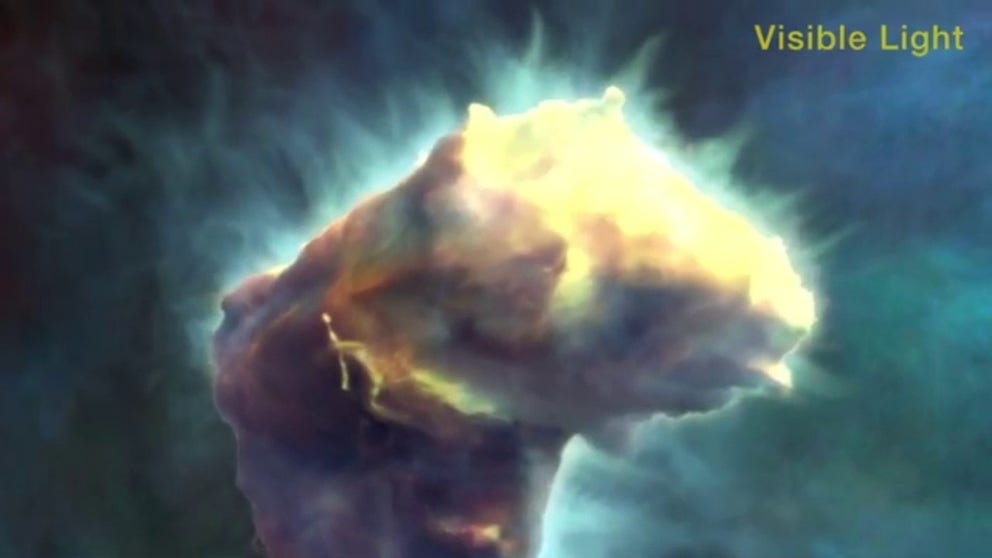New volcano discovered on one of Jupiter’s many moons by NASA spacecraft
The volcano was said to be located on the moon Io, which is one of nearly 100 celestial bodies that orbit around the fifth planet from the Sun.
Pillars of Creation star seen in new visualization from NASA's Hubble, Webb telescopes
Using data from NASA's Hubble and Webb space telescopes, astronomers and artists modeled the iconic Pillars of Creation in the Eagle Nebula (Messier 16 or M16) in three dimensions, creating a movie that allows viewers to fly past and among the pillars.
NASA’s Juno spacecraft, flying around the ‘Gas Giant’ of the solar system, recently discovered a volcano on one of Jupiter’s many moons – a feature that was not detected some 27 years ago.
The volcano was said to be located on the moon Io, which is one of nearly 100 celestial bodies that orbit around the fifth planet from the Sun.
Researchers said Io’s pale yellow surface made the black volcanic feature and red deposits easy to depict in imagery.
"The eastern side of the volcano is marked by a diffuse red stain from sulfur vented into space and deposited back onto Io," the Europlanet Society stated. "On the western side, two dark lava streams, each extending about 100 kilometers, have formed. At the ends of these flows, the heat has caused surface materials to vaporize, creating two overlapping gray circular deposits."
A previous flyby of the moon in 1997 spotted dozens of volcanic features, but the newest one is thought to have emerged between imagery taken during the last 27 years.

Comparison of imagery from 1997 and 2024
(NASA/JPL-Caltech/SwRI/MSSS / NASA)
SEE THE OBJECTS HUMANS LEFT BEHIND ON THE MOON
Io is Jupiter’s third-largest moon and the most volcanically active body in the solar system, with potentially hundreds of geological features.
"Our recent JunoCam images show many changes on Io, including this large, complicated volcanic feature that appears to have formed from nothing since 1997," said Michael Ravine, a project manager at Malin Space Science Systems, Inc, which designed and operates parts of NASA’s Juno Project.
Scientists believe Io’s atmosphere is composed mostly of sulfur dioxide and heat that is generated is from its gravitational interactions with Jupiter and nearby moons.

Comparison of JunoCam data from April 2024 with Galileo spacecraft imagery of the same area in November 1997 (greyscale insert) reveals a new volcanic feature on the surface of Jupiter’s moon, Io.
(NASA/JPL-Caltech/SwRI/MSSS / NASA)
"JunoCam images are created by people from all walks of life, providing a way for anyone to join our science team and share in the excitement of space exploration," Scott Bolton, the principal investigator of NASA’s Juno mission at Southwest Research Institute, stated.
The Juno spacecraft was launched in 2011 and was only tasked with making 35 orbits of Jupiter, but because of its successful operations and valuable discoveries, its mission has been extended.
NASA says the spacecraft could operate through at least September 2025 while taking additional observations of the planet’s structure, atmosphere and moons.
